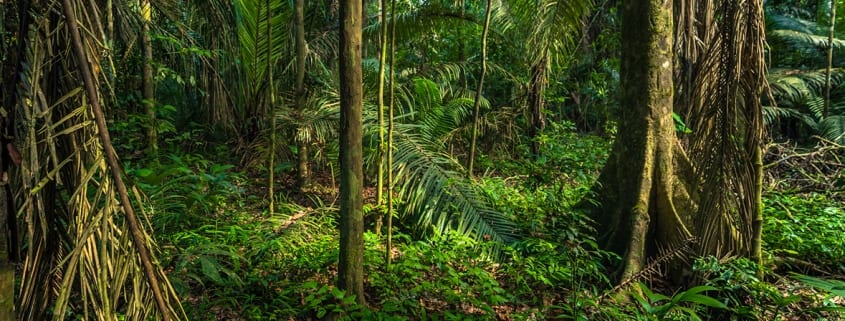Resurgence of Wildlife at Blue-throated Macaw Reserve
An island of protected native habitat, purchased and saved by Rainforest Trust donors, in a sea of hunted and overgrazed cattle ranches is like a magnet for wildlife. Our job has been trying to ensure that we can accommodate them all. If last year could be thought of as the year herbivorous mammals discovered the protective advantages of our reserve, this year could be described as the year predators discovered those mammals. Jaguars, pumas, manned wolves, ocelots, jaguarundis, and possible bush dogs all staked claim in the Barba Azul Nature Reserve this year. This is all part of the succession of a natural ecosystem, but many of these mammals need a larger protected range to maintain natural populations.
Barba Azul Nature Reserve now protects 12,300 acres of forest islands, tropical savanna, marshes and a pristine freshwater ecosystem in Bolivia thanks to Rainforest Trust donor support in 2009 and 2010. We are galloping to keep up with natures pace to recuperate. It was glorious to see the tropical savanna flourish without the grazing pressure of 2,000 head of cattle. A diversity of tall grasses covering the landscape offer new breeding spots for the endangered Cock-tailed Tyrant, Black-masked Finch, and Sharp-tailed Tyrant. Pampas Deer, Marsh Deer, and Giant Anteater all becoming abundant in the plentiful grasses. But by the end of 2010, we were well aware the years of tall grass was building up a high fuel load potential for invading fires. All the surrounding cattle ranches yearly burn their grasses for fresh fodder for their cattle. Our protected landscape was now a threat to the savanna but also to the forest islands that are required by the Critically Endangered Blue-throated Macaws, the highest concentration of the macaws in the world with 35 to 110 birds using the reserve at any one time.
It took nearly a week to build 47 miles of firebreak surrounding and safely protecting the forest islands and dividing the reserve into 11 fire-safe segments. We dug barriers to basically create a flattened fire break trail, which then could then be easily mowed for long-term maintenance. A fantastic by-product of these priority firebreaks is that they will also serve as easy trails for accessing the complete reserve. The firebreaks will be our base trails, where we can then develop thinner foot trails to more specific habitats. The next step is to plan a patch-burn system to offer a mosaic of grassland habitat in the region and to avoid a build up of dead grass fuel that would burn too hot if ever alight.
There are many steps to taking a functioning cattle ranch and turning it into a sustainable nature reserve. We have completed a field station with four bedrooms, two bathrooms, kitchen, and storage area. Each bedroom has four bunk beds to accommodate the maximum number of students and researchers. Our runway, which worked just fine for a simple cattle ranch, quickly became an obstacle once we started contracting the best small aircraft pilots in Bolivia for tourist visits. What was good enough for local pilots was in poor shape, in the wrong direction for the prevailing winds, and too short (400 yards) for the safest pilots. We have now completed a level, correctly positioned, and long grass runway (765 yards–7 football fields) to receive the most particular of pilots–which is what we want.
The protection effort is worth it as we see more and more animals take advantage of our safe home. This year we recorded Blue-throated Macaws daily using the different forest islands with seven pairs raising recently fledged juveniles. The threatened Orinoco goose bred at least 30 chicks along our protected Omi river. Small mammal numbers decreased clearly because of higher numbers of feline predators utilizing our hunter-free sanctuary.
This area is the only known site in the world with concentrations of the Blue-throated Macaw. Outside of this rare site, the Blue-throated Macaw survives in isolated pairs on private ranches with hundreds of miles between individuals. It is critical that we can protect as much of this area as possible. We need your help expanding the reserve to ensure the survival of this stunning macaw and to provide greater protection for the Beni’s threatened wildlife.




